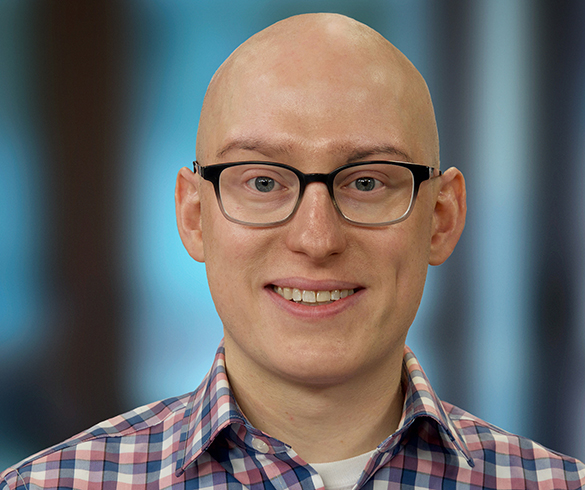
Raising the Bar for Alopecia Areata
Alopecia areata is a common autoimmune condition that causes hair loss on the scalp, face and sometimes other areas of the body. Even though nearly 7 million people in the United States are affected by the condition, there is no cure, effective commercially available treatments or standard of care. Alopecia areata does not discriminate – it can affect anyone and any age as a temporary affliction or long-term, life-long condition.
Living with alopecia areata is no easy feat, and for 37-year-old Tyrone Folliard-Olson, it’s been a life-long journey. When he was diagnosed with the condition at age 13, he experienced patchy bald spots on his head. As he grew older, his hair loss became more unpredictable, and his eyebrows and eyelashes disappeared. Eventually, Folliard-Olson saw the complete and permanent loss of his body hair.
Throughout his journey that began during his formative years, Folliard-Olson learned to live with different forms of alopecia areata and its unpredictable nature and accepted the fact there are no effective treatments for the condition. He was forced to deal with the mental and emotional trauma that is all too common for many people living with alopecia areata. On top of the standard teenage turmoil, Folliard-Olson grew up struggling with the fallout of his alopecia areata, which took a significant toll on his mental health and well-being.
Folliard-Olson said, “alopecia areata is uncertainty.” There is no way to predict when and where hair loss will happen, if it is temporary or permanent, if it will advance into more serious stages of the disease or how a person will react to losing something many take for granted.
With no effective available therapeutic interventions, Folliard-Olson’s experience with medical care has been painful and traumatizing. Despite trying several experimental treatments, clinical options have yielded minimal or no results. He recalls painful memories of having a large-gauge needle “jammed” into different parts of his scalp.
“I could tell you the places that hurt, and don’t hurt, to get injections,” Folliard-Olson said. “They were not great options, but it was all we had. The pros did not outweigh the cons.”
Folliard-Olson is using his voice to educate and empower others living with or affected by alopecia areata to live their best lives. Through his volunteer work with the National Alopecia Areata Foundation (NAAF), he is committed to providing support to those who are newly diagnosed.
The organization, along with Folliard-Olson and other passionate advocates, helps the broader patient community reach a place of acceptance and self-love while advocating for change that prioritizes the needs of patients. Folliard-Olson is working hard to help others living with alopecia so they are more informed to take care of their health and well-being.
To learn more about alopecia areata and ways to get involved, please visit NAAF.org.
Source:
National Alopecia Areata Foundation


